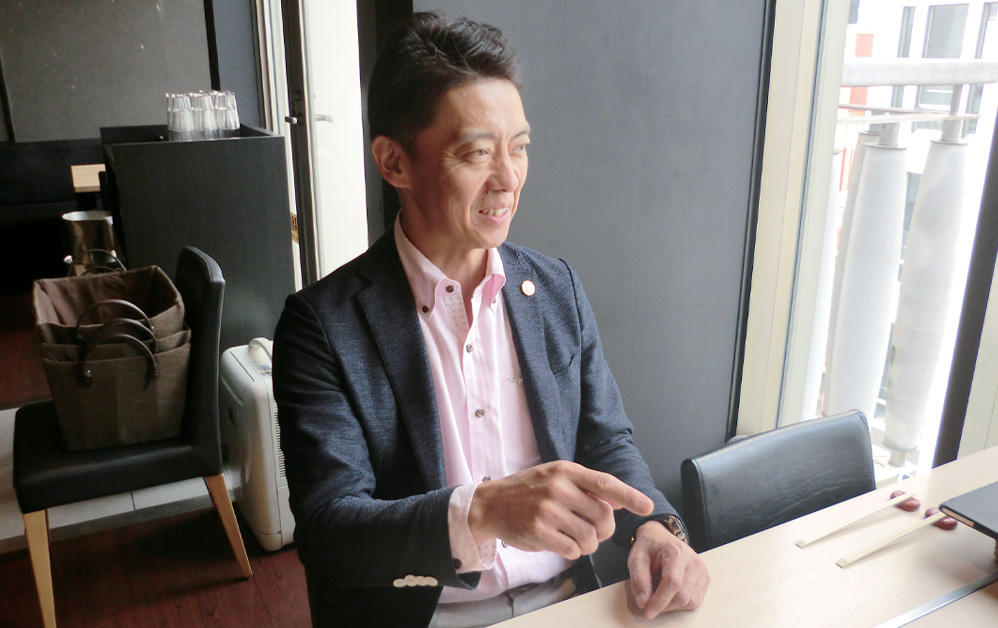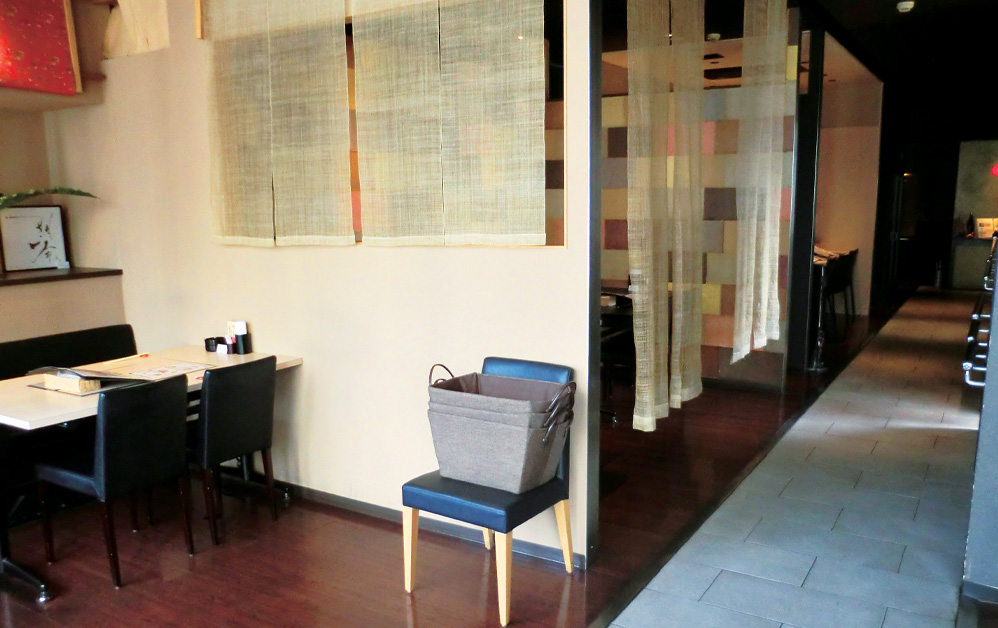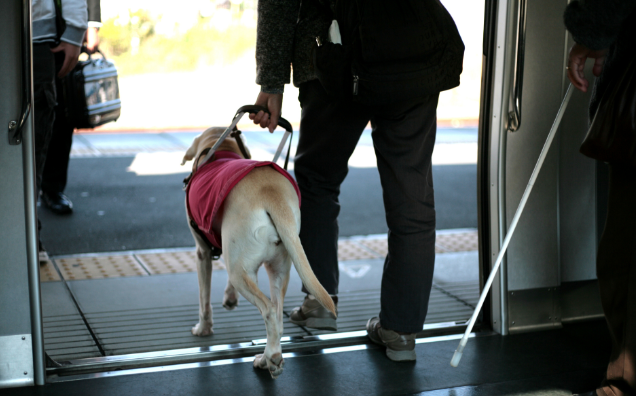- TOP >
- Efforts of Sakutsuki
Efforts of Sakutsuki 9F Ginza Grandia II, 3-3-14 Ginza, Chuo-ku, Tokyo
Providing a restaurant that even disabled people are free to enjoy without worry
We are striving for a restaurant that is barrier-free in terms of both tangible and intangible aspects
Sakutsuki—a Japanese-style grilled food restaurant located on prime Ginza land—was opened as a barrier-free restaurant by a president who wished to create a restaurant where anyone can dine without worry as a result of his experiences living with a disabled family member. Koji Oami, the managing director and head chef, talked to us about the restaurant's specific efforts in this regard.

The wishes expressed by the restaurant's name
The president's child has Down syndrome. Because the child has heart disease as well, it was said that he probably wouldn't live long, but his surgery was a success, and he is still alive and healthy. His name is Sakuya, from which Saku—the first character in the restaurant's name—was taken. Tsuki, which means moon in Japanese, refers specifically to a new moon, which does not cast shadows and is intended to express the idea of providing service to disabled people without prejudice. As one result of this concept, the restaurant uses spotlights that do not cast shadows for its indoor lighting.
In addition, a new moon can only become fuller over time, which expresses the idea that things will only get better from here. In other words, the name expresses the president's hope that both Sakuya and his restaurant will only get better from here.
Because the president's child is disabled, he felt as though there weren't any restaurants where his family could enjoy a meal without having to worry. In fact, I heard that he opened the restaurant after he heard similar stories from other families of disabled people and made the decision to create such a restaurant himself.
Coming up with ways to enable anyone to enjoy eating and drinking
Our restaurant's counter is a bit higher than most so that electric wheelchairs can fit under them if the levers are folded down. In addition, they are deeper than normal. Our tables also have adjustable legs, and we have used custom-ordered parts to make them taller so customers in wheelchairs can fit under them. When the president placed the orders, he researched the heights of tables, etc. to make sure all wheelchairs could fit under them.
Not all the disabled people who come to our restaurant are wheelchair users, so we have also prepared forks and spoons especially for customers with other physical disabilities. These forks and spoons are designed so that the angles of their heads can be changed, which makes them easier for people with physical disabilities that cause weakness to eat with, and they have been used several times up until now.
Our restrooms are used not only by wheelchair users but by healthy people as well. We also provide facilities for ostomates, who sometimes use them. Our restrooms also have enough room for strollers, so people with babies often use them as well.
When our restaurant was built, we came up with various things that would be necessary for ostomates, including mirrors in the restrooms. Our basic approach is to be able to provide service not only to disabled people but to all customers without discrimination. If we happen to find a customer discriminating against someone else, this approach includes having them leave.
Our staff members also provide support when disabled people use our restrooms.
Providing a naturally barrier-free restaurant and never refusing service unless all the seats are taken
We have a total of 15 staff members, and there are always two working in the hall at lunch time, three working there at dinner time, and three working in the kitchen.
Because we have set up a barrier-free environment, I think anyone who works at our restaurant will naturally learn how to deal with disabled customers over time. We don't actually give our employees any special barrier-free-related instructions. There is no manual, but we do tell our employees to watch customers closely and do what seems necessary. I suppose our restaurant is similar to normal services in that we try to infer what our customers need. We believe that it's only natural to do whatever you can in line with customer needs, so we generally don't refuse service unless all the seats are taken.
 Step-free restaurant interior and a hallway handrail
Step-free restaurant interior and a hallway handrail
 social media accounts
social media accounts
Tokyo, a city that is accessible everywhere to anyone.
Sightseeing where you wish, as you wish.
This ability to travel anywhere you please makes life that much richer.
Tokyo welcomes your visit.
Here you can encounter tradition,
history, culture, nature, technology,
and, best of all, smiling faces.
Making tourism closer and more
enjoyable through accessible tourism.




